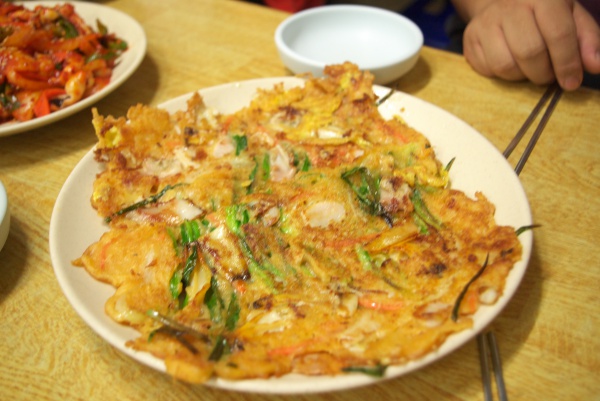Facts About Jeon
Jeon is a celebrated dish in Korean cuisine that involves seasoning ingredients such as fish, meat, or vegetables, coating them with wheat flour and an egg wash, and then frying them in oil. This versatile dish can be prepared using a wide range of ingredients, including poultry, seafood, and an array of vegetables. Jeon can be enjoyed in various forms: as an appetizer, a side dish (known as banchan), or as a snack to accompany drinks (known as anju). Some jeon varieties even serve as sweet desserts, such as hwajeon, which is made with edible flowers.
In Korean royal court cuisine, jeon is known by several names, including jeonya, jeonyueo, and jeonyuhwa. When prepared for ancestral rites, it is called gannap and is typically made from beef liver, omasum (a part of the cow's stomach), or fish.
Jeon comes in many types, categorized based on their main ingredients:
1. Meat Jeon: Includes varieties such as yukjeon (beef jeon), deunggol-jeon (pork jeon), and donggeurang-ttaeng (meat patties).
2. Seafood Jeon: Features dishes like saengseon-jeon (fish jeon), haemul-jeon (seafood jeon), and daeha-jeon (shrimp jeon).
3. Vegetable Jeon: Offers options such as gamja-jeon (potato jeon), pajeon (green onion jeon), and deodeok-jeon (mountain herb jeon).
4. Flower Jeon: Includes sweet varieties like hwajeon, made with edible flowers such as gardenia, chrysanthemum, and roses.
In Korean royal court cuisine, specific jeon varieties are prepared using unique ingredients like sparrow meat, beef omasum, and thinly sliced cod. Each type of jeon showcases a distinct preparation method and highlights the rich traditions of Korean culinary arts.

 North Korea
North Korea